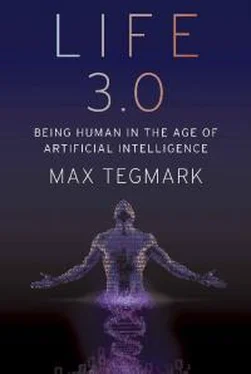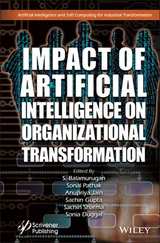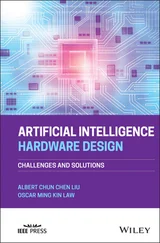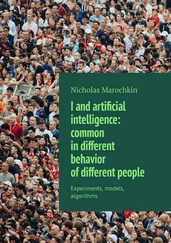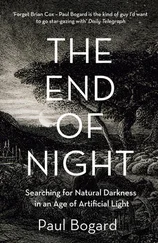I sympathize with Rodney Brooks and other robotics pioneers who feel unfairly demonized by scaremongering tabloids, because some journalists seem obsessively fixated on robots and adorn many of their articles with evil-looking metal monsters with shiny red eyes. In fact, the main concern of the beneficial-AI movement isn’t with robots but with intelligence itself: specifically, intelligence whose goals are misaligned with ours. To cause us trouble, such misaligned intelligence needs no robotic body, merely an internet connection—we’ll explore in chapter 4 how this may enable outsmarting financial markets, out-inventing human researchers, out-manipulating human leaders and developing weapons we cannot even understand. Even if building robots were physically impossible, a super-intelligent and super-wealthy AI could easily pay or manipulate myriad humans to unwittingly do its bidding, as in William Gibson’s science fiction novel Neuromancer .
The robot misconception is related to the myth that machines can’t control humans. Intelligence enables control: humans control tigers not because we’re stronger, but because we’re smarter. This means that if we cede our position as smartest on our planet, it’s possible that we might also cede control.
Figure 1.5 summarizes all of these common misconceptions, so that we can dispense with them once and for all and focus our discussions with friends and colleagues on the many legitimate controversies—which, as we’ll see, there’s no shortage of!
The Road Ahead
In the rest of this book, you and I will explore together the future of life with AI. Let’s navigate this rich and multifaceted topic in an organized way by first exploring the full story of life conceptually and chronologically, and then exploring goals, meaning and what actions to take to create the future we want.
In chapter 2, we explore the foundations of intelligence and how seemingly dumb matter can be rearranged to remember, compute and learn. As we proceed into the future, our story branches out into many scenarios defined by the answers to certain key questions. Figure 1.6 summarizes key questions we’ll encounter as we march forward in time, to potentially ever more advanced AI.
Right now, we face the choice of whether to start an AI arms race, and questions about how to make tomorrow’s AI systems bug-free and robust. If AI’s economic impact keeps growing, we also have to decide how to modernize our laws and what career advice to give kids so that they can avoid soon-to-be-automated jobs. We explore such short-term questions in chapter 3.
If AI progress continues to human levels, then we also need to ask ourselves how to ensure that it’s beneficial, and whether we can or should create a leisure society that flourishes without jobs. This also raises the question of whether an intelligence explosion or slow-but-steady growth can propel AGI far beyond human levels. We explore a wide range of such scenarios in chapter 4 and investigate the spectrum of possibilities for the aftermath in chapter 5, ranging from arguably dystopic to arguably utopic. Who’s in charge—humans, AI or cyborgs? Are humans treated well or badly? Are we replaced and, if so, do we perceive our replacements as conquerors or worthy descendants? I’m very curious about which of the chapter 5 scenarios you personally prefer! I’ve set up a website, http://AgeOfAi.org, where you can share your views and join the conversation.
Finally, we forge billions of years into the future in chapter 6 where we can, ironically, draw stronger conclusions than in the previous chapters, as the ultimate limits of life in our cosmos are set not by intelligence but by the laws of physics.
After concluding our exploration of the history of intelligence, we’ll devote the remainder of the book to considering what future to aim for and how to get there. To be able to link cold facts to questions of purpose and meaning, we explore the physical basis of goals in chapter 7 and consciousness in chapter 8. Finally, in the epilogue, we explore what can be done right now to help create the future we want.

Figure 1.6: Which AI questions are interesting depends on how advanced AI gets and which branch our future takes.
In case you’re a reader who likes skipping around, most chapters are relatively self-contained once you’ve digested the terminology and definitions from this first chapter and the beginning of the next one. If you’re an AI researcher, you can optionally skip all of chapter 2 except for its initial intelligence definitions. If you’re new to AI, chapters 2 and 3 will give you the arguments for why chapters 4 through 6 can’t be trivially dismissed as impossible science fiction. Figure 1.7 summarizes where the various chapters fall on the spectrum from factual to speculative.

Figure 1.7: Structure of the book
A fascinating journey awaits us. Let’s begin!
THE BOTTOM LINE:
• Life, defined as a process that can retain its complexity and replicate, can develop through three stages: a biological stage (1.0), where its hardware and software are evolved, a cultural stage (2.0), where it can design its software (through learning) and a technological stage (3.0), where it can design its hardware as well, becoming the master of its own destiny.
• Artificial intelligence may enable us to launch Life 3.0 this century, and a fascinating conversation has sprung up regarding what future we should aim for and how this can be accomplished. There are three main camps in the controversy: techno-skeptics, digital utopians and the beneficial-AI movement.
• Techno-skeptics view building superhuman AGI as so hard that it won’t happen for hundreds of years, making it silly to worry about it (and Life 3.0) now.
• Digital utopians view it as likely this century and wholeheartedly welcome Life 3.0, viewing it as the natural and desirable next step in the cosmic evolution.
• The beneficial-AI movement also views it as likely this century, but views a good outcome not as guaranteed, but as something that needs to be ensured by hard work in the form of AI-safety research.
• Beyond such legitimate controversies where world-leading experts disagree, there are also boring pseudo-controversies caused by misunderstandings. For example, never waste time arguing about “life,” “intelligence,” or “consciousness” before ensuring that you and your protagonist are using these words to mean the same thing! This book uses the definitions in table 1.1.
• Also beware the common misconceptions in figure 1.5: “Superintelligence by 2100 is inevitable/impossible.” “Only Luddites worry about AI.” “The concern is about AI turning evil and/or conscious, and it’s just years away.” “Robots are the main concern.” “AI can’t control humans and can’t have goals.”
• In chapters 2 through 6, we’ll explore the story of intelligence from its humble beginning billions of years ago to possible cosmic futures billions of years from now. We’ll first investigate near-term challenges such as jobs, AI weapons and the quest for human-level AGI, then explore possibilities for a fascinating spectrum of possible futures with intelligent machines and/or humans. I wonder which options you’ll prefer!
• In chapters 7 through 9, we’ll switch from cold factual descriptions to an exploration of goals, consciousness and meaning, and investigate what we can do right now to help create the future we want.
Читать дальше
